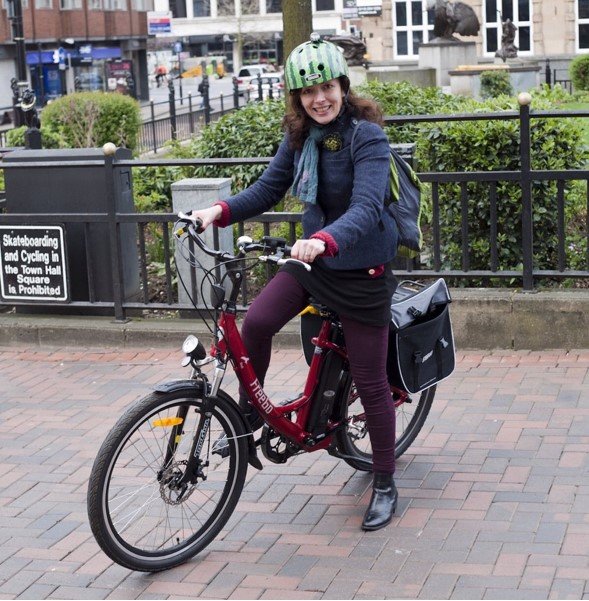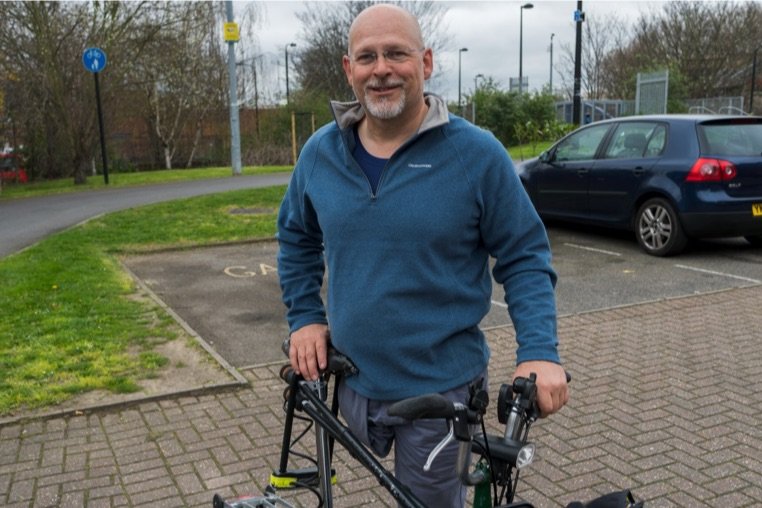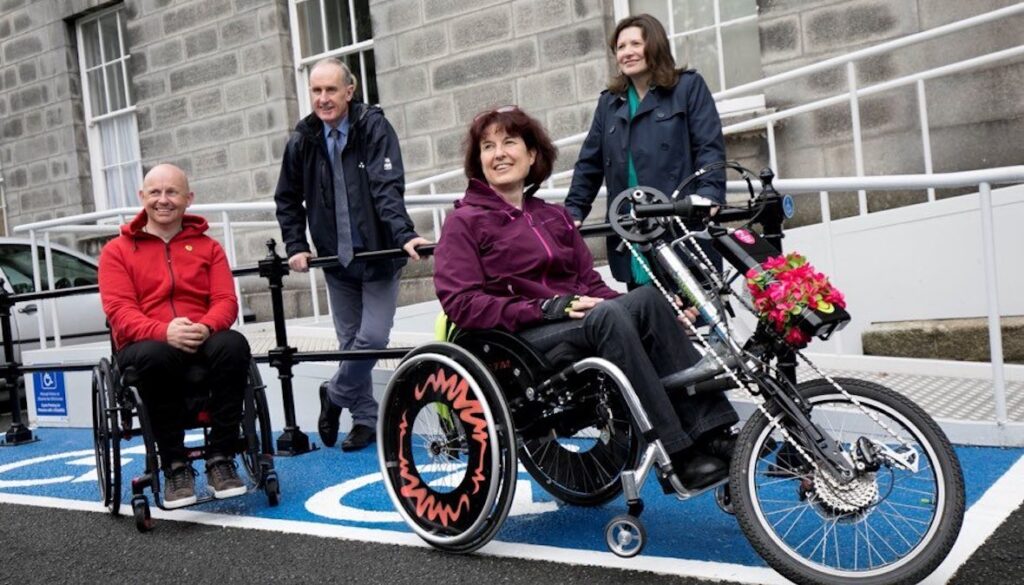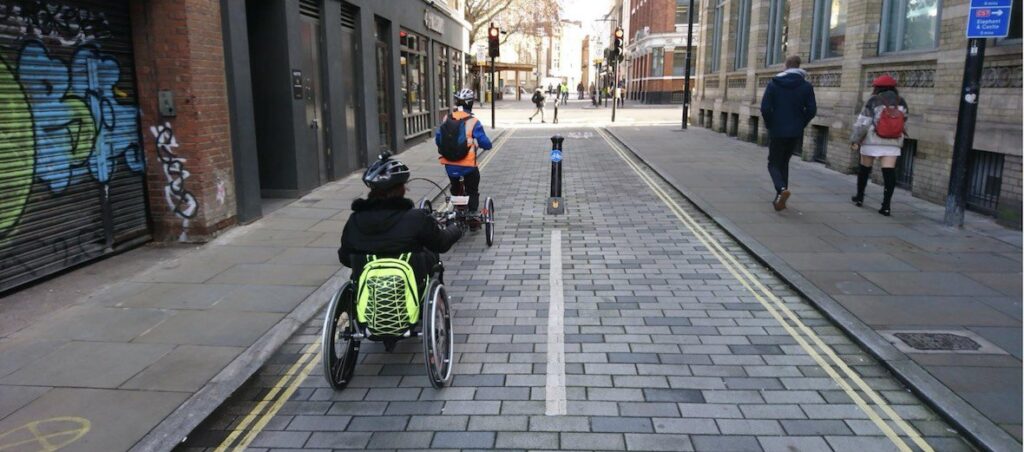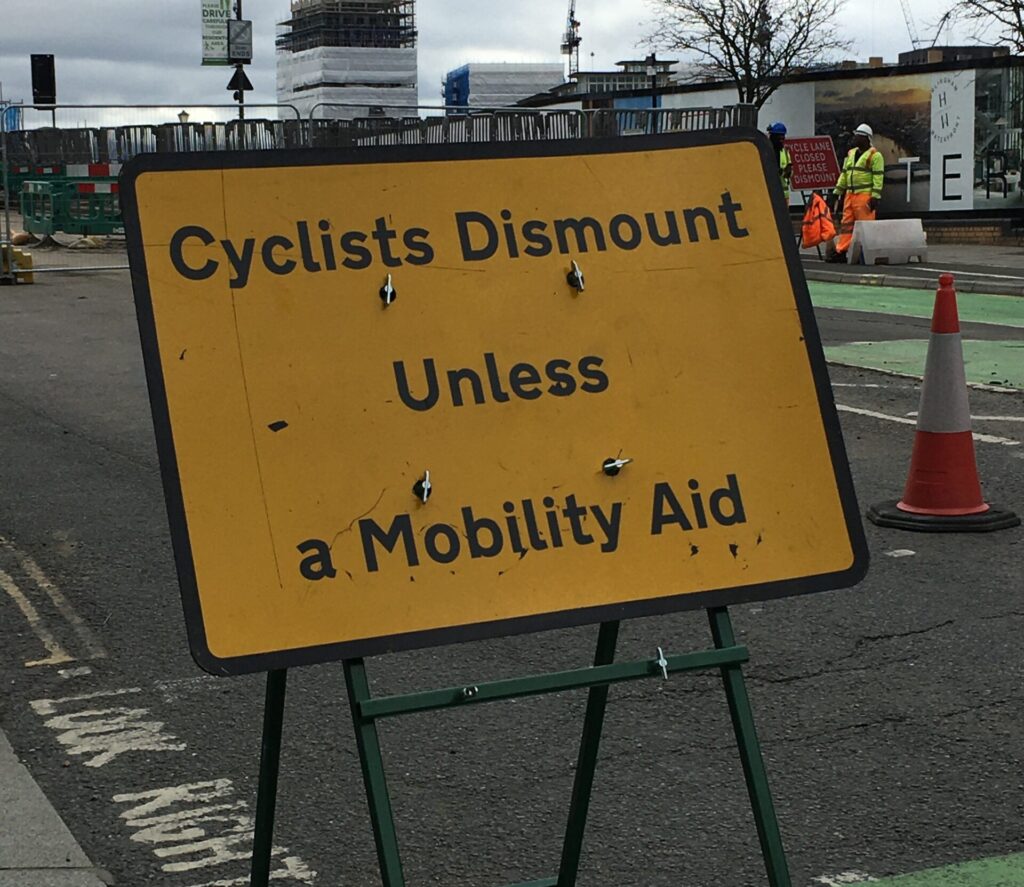What is our campaign about?
According to our latest research, inaccessible cycle infrastructure is the biggest difficulty faced by Disabled cyclists. This is perhaps unsurprising given the kinds of cycles that many Disabled people use, such as handcycles, recumbents and trikes, which are typically longer and wider than standard two-wheeled bicycles – together with the fact that most Disabled cyclists use their cycle as a mobility aid and can’t physically dismount and walk or wheel their cycle.
Physical barriers, such as bollards, bridges and kissing gates, pose real and everyday problems that limit Disabled cyclists’ ability to cycle where and when they want.

However, it is not just physical barriers that can make cycling inaccessible to Disabled cyclists. Cycle lanes and cycle parking facilities frequently fail to account for the dimensions and requirements of non-standard cycles, making door-to-door cycle journeys all but impossible for many.

What are we doing to change this?
We are encouraging all local authorities and transport professionals to adopt either Highways England’s ‘cycle design vehicle’ or the London Cycling Design Standards’ ‘inclusive cycle’ concept when designing cycle infrastructure. This will ensure that all infrastructure is built with the needs of users of non-standard cycles in mind. We are also pushing for more inclusive cycle parking facilities, like those erected in Dublin recently.
As part of our campaign, we have produced the world’s first Guide to Inclusive Cycling, which promotes best practice in the design and delivery of inclusive cycle infrastructure. The Guide is now in its second edition, and its principles have been adopted by transport professionals around the UK and internationally.
How can you get involved?
Help us promote the principles of inclusive cycling by making your local council aware of our Guide to Inclusive Cycling – you could even try and find out which of your councillors is responsible for transport and send them a copy directly.
Additionally, if you’ve experienced or are continuing to experience problems with inaccessible cycle infrastructure locally, why not log this on cyclescape.org? The website allows cyclists to map, share and discuss local infrastructure issues.
What Disabled cyclists have said:
“If the poor quality of cycle infrastructure makes it difficult for a non-disabled person to cycle, then it is going to be near impossible for someone with a disability. Cycling on poor quality infrastructure is hard going at times, and even more so when having to mix with drivers who have little patience for those on two wheels. If we had quality cycle infrastructure like they have in places like the Netherlands, this would enable active travel for all and especially for disabled people – whether they are cycling, using a wheelchair or mobility scooter”

